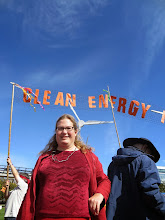The PUC, a division of the Department of Regulatory Agencies, denied a motion to approve a settlement agreement addressing implementation of Xcel’s CSG program. The PUC said the proposed agreement was not in the public interest because it was inconsistent with certain statutes, PUC rules and previous decisions, and it was likely to raise the cost of renewable energy to customers.
The PUC noted that in 2014 it directed Xcel to acquire between 19.5 megawatts (MW) and 90 MW of community solar gardens by the end of 2016, and said its rejection of the proposed settlement did not alter that authorization.
The settlement was entered into by Xcel, SunShare, Clean Energy Collective and Community Solar Energy. The three solar companies build and operate community solar gardens and were declared by Xcel to be the three winning bidders of the company’s 2015 competitive solicitation for 29.5 megawatts (MW) of CSG resources. Under the terms of the proposed settlement, Xcel would pay a rate of $0.03/kWh for the Renewable Energy Credits produced by the CSGs, instead of the bid prices offered in response to the 2015 request for proposals.
In rejecting the settlement, the PUC said questions about the nature of the negotiations and the single, higher REC price made it unlikely that the settlement would result in cost-effective implementation of CSGs. PUC advisory staff estimated that the settlement would increase the cost of the development of solar gardens by hundreds of thousands of dollars per facility.
“Rather than utilize the Commission-approved competitive process, the parties filed a settlement that is not in the public interest,” PUC Chairman Joshua Epel said.
The Commission also said settlement provisions about the proposed method for determining customer bill credits for CSGs, and about Xcel ownership of a CSG also were inconsistent with statutes, PUC rules and previous PUC decisions.
As a protection to ratepayers, the Commission denied Xcel a presumption of prudence for the cost for any CSGs acquired through the 2015 and 2016 request for proposals.


